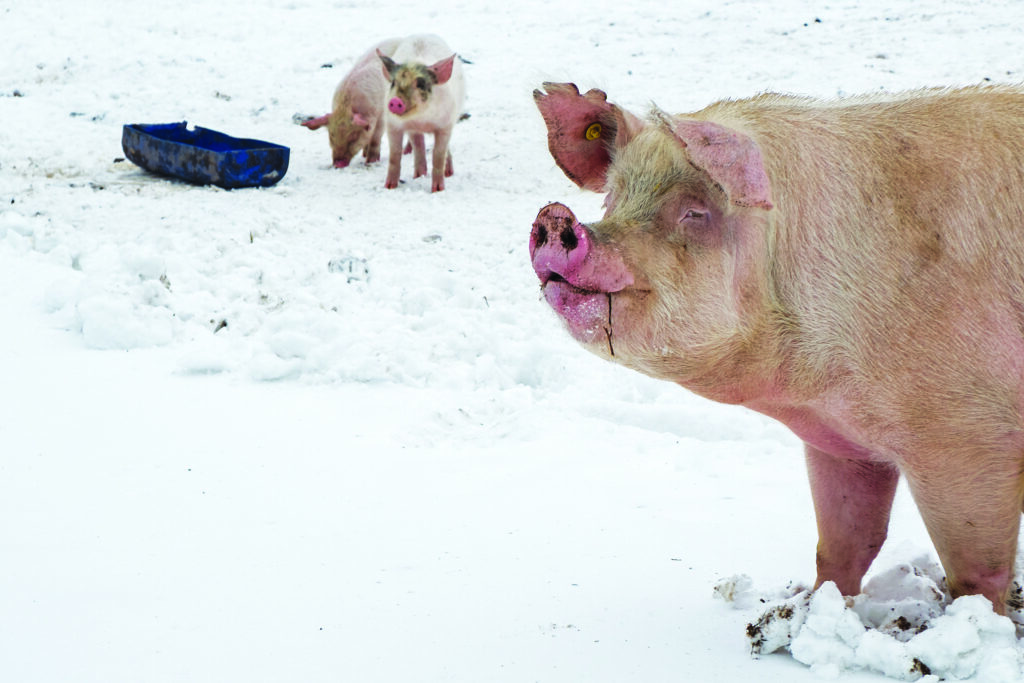Despite some huge challenges, such as the African swine fever (ASF) epidemic and falling prices, the Russian pig sector has managed to boost production performance to record levels.
The Russian Agricultural Ministry reported in late November that, for the first 10 months of 2016 year-on-year production had increased by 13.5 per cent to 2.8 million tonnes liveweight.
From a veterinary perspective, 2016 has been declared the worst-ever for Russia’s pig industry. But, according to Yuri Kovalev, CEO of the Russian Union of Pork Producers (RUPP) it appeared to have been the best-ever in terms of production, which was forecast to reach 3.4 million tonnes, a 10.5 per cent increase on 2015, he said.
Also, according to RUPP, Russia exported 30,000t of pork in the first 10 months of 2016, double the figure for same period in 2015.
A commonly held view across the sector is that export growth is the only factor, or is one of a limited number of factors, that could drive further growth, as the domestic market is very close to saturation.
For instance, Miratorg, Russia’s largest pork producer, revealed plans in early 2016 to export 25 per cent of all pork production – or between 100,000-150,000t per year.
Cherkizovo, another producer, has announced similar plans, and Russian Agriculture Minister Alexandr Tkachev has forecast that Russia will be exporting between 1-2m tonnes of meat, primarily pork and poultry, within a decade.
“A commonly held view is that export growth is the only factor, or one of a limited number of factors, that could drive further growth, as the domestic market is very close to saturation”
Import figures for 2016 were expected to fall by 13 per cent, to around 263,000t, primarily from Brazil, according to RUPP
Declining market prices have continued to highlight the need for exports. November 2016 prices were 15 per cent down on 2015.
Prices have been falling since mid-2015, when the positive effect of the food embargo started to fade, and are now 35 per cent lower than their peak of May 2015.
Plans to establish large volumes of pork exports face a number of barriers, with international politics playing a big role.
There is a Plan B, though, and it could be described as the elimination of pig farming.
Private or non-industrial farming still accounts for 1m tonnes of pork production per year, but due to problems with obtaining soft loans, administrative pressure and vulnerability to ASF, production performance in this sector is falling year after year.
According to RUPP, Russian pig farming is expected to grow by 1m tonnes by 2020. That will be accommodated by either an export boom, or liquidation of the small players.
It should be noted that these estimates would mean nothing if the food embargo is lifted and European pork is allowed into Russia again.
Frosty reception is only the beginning
Even by Russian standards, the winter has been complicated, with unprecedented frosts and the coldest November since the start of the century. It’s been even worse in the east, which has experienced the coldest winter since 1891.
But spare a thought for the Black Earth region, which includes the country’s main pork production areas, such as Belgorod, Voronezh and Kursk Oblast. Here, temperatures plunged to -35C in mid-December.
Every farm in the country is designed to withstand these conditions, but they put an additional financial strain on business. The cost of heating is already 30 per cent up on the comparatively warm winter of 2014.
ASF is heading west
Losses related to the ASF outbreak in neighbouring Ukraine hit UAH 1 billion (£30.4m) in 2016, according to Irina Palamar, head of the Ukraine Livestock Association.
Direct losses accounted for 60 per cent of the overall figure, while the remainder is attributed to lost exports associated with ASF.
Just as in Russia, the situation is worsening in Ukraine, because farmers are covering-up outbreaks. In Russia, farmers or regional veterinary officials could be held criminally liable for ASF outbreaks.
To avoid dealing with the law enforcement agencies, some farmers are culling infected pigs and burying corpses in the forest, where the virus can live for decades.
Moldova reported its first ASF outbreak on October 6 and Russian veterinary watchdog Rosselkhoznadzor has suggested ASF is moving west with an average speed of 100 – 150 km per year.
So, this year, the virus may get close to Romania, central regions of Poland and we might even see it identified in Germany.




